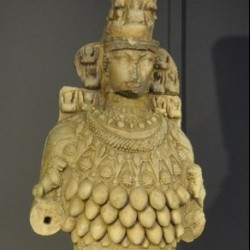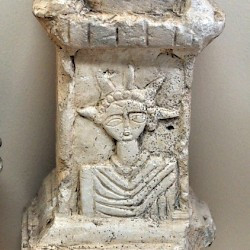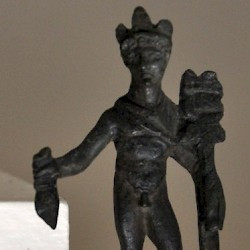Jona Lendering
Jona Lendering read history at Leiden University (MA 1993), specialized in Mediterranean culture at the Amsterdam Free University (MA 1996), and worked at excavations in Holland (Riethoven) and Greece (Halos). After teaching historical theory and ancient history at the Free University for several years, he was one of the founders of a school for history teaching, Livius Onderwijs. Born in Amsterdam, it has now spread to auxiliary locations in Bussum, Dronten, Gouda, Haarlem, Hoorn, Schagen, Zaanstad, and Zoetermeer. As of 2013, Livius Onderwijs has eight teachers, about 500-600 students a year, and offers tours to countries like Italy, Turkey, Iran, and Lebanon. The field trips help to etch into the students' minds some of what they've learned at the school.
Because history is for a large part telling a story, something you do best in your own language, Lendering prefers to publish in Dutch journals. However, he has contributed to the Bryn Mawr Classical Review and Ancient Warfare, while he is the founder of Ancient History Magazine. He is also the publisher and editor of the on-line publication of the Babylonian Chronicles of the Hellenistic Period, a set of important cuneiform sources for the history of the Seleucid and Parthian Near East, transcribed, translated and commented on by Bert van der Spek of the Free University Amsterdam and Irving Finkel of the British Museum. A publication as book is in preparation.
Lendering has written several books and maintains a blog in Dutch. He is the author of several books, including Edge of Empire and Consensus and Crises. For the Livius website, which has received several awards, he collaborates closely with Bill Thayer of LacusCurtius. Lendering is also the webmaster of two daily blogs, the MainzerBeobachter.com and Grondslagen.net.
There are 9380 items in Jona Lendering:

The large statue of Artemis from the Prytanaeum of Ephesus |

The small statue of Artemis from the Prytanaeum of Ephesus |
Artemisia
Artemisia: sister and wife of Maussolus, after his death satrap of Caria between 353 and 351, member of the Hecatomnid dynasty. …Artemisia of Halicarnassus
Artemisia: queen of Halicarnassus in c. 480 BCE, ally of the Persian king Xerxes during his invasion of Greece.Halicarnassus was a Graeco-Carian city that belonged to the empire of the Persian Achaemenids. The Persian authorities liked their cities to be…Artemisium
Artemisium (Greek Ἀρτεμίσιον): northern cape of the isle of Euboea, well known for a temple of Artemis, a statue of Zeus, and a naval battle in 480 BCE. …Artemisium (480 BCE)
Artemisium (Greek Ἀρτεμίσιον): northern cape of the isle of Euboea, well known for a the naval battle in which the navy of the united Greeks was unable to black the advance of the Persian naval forces (480 BCE). …Artystone
Artystone (Elamite Irtašduna) was the daughter of the Persian king Cyrus the Great (559-530 BCE) and a wife of king Darius I the Great (522-486). …Arval brethren
Aryandes
Aryandes: Persian nobleman, after 525 first satrap of Egypt. He died after 512. Persian nobleman; statue from Egypt In 526 BCE, pharaoh…Aryans
Aryans: name of the ancestors of the Persian elite of the Achaemenid Empire. (Not to be confused with Arians.) The name…

Arykanda, Altar for Helios |

Arykanda, Figurine of Hermes |